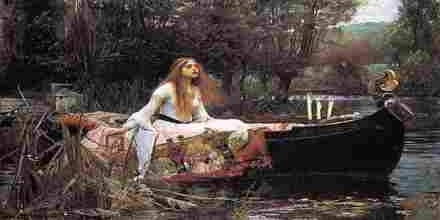The Romantic era in music spans from roughly 1820 to 1900 and is marked by a profound shift in aesthetic values, emphasizing emotion, individualism, and the beauty of nature. This period saw composers breaking away from the rigid structures of classical forms, instead prioritizing personal expression and the exploration of deep emotional landscapes. The term "Romantic" itself is somewhat misleading, as it does not refer to romantic love but rather to a broader sense of romance—an idealization of emotion, beauty, and nature.
The Romantic era was influenced by the literary movement of the same name, which emphasized imagination, emotion, and the sublime in nature. Composers like Ludwig van Beethoven, who bridged the gap between the Classical and Romantic periods, began to infuse their music with a sense of drama and personal expression that would become characteristic of the genre. Beethoven's late works, such as his Ninth Symphony, are often cited as pivotal in the transition from Classicism to Romanticism.
One of the defining features of Romantic music is its emphasis on programmatic content—music that tells a story or evokes specific images or emotions. Composers like Hector Berlioz and Franz Liszt were pioneers in this regard, creating works that were deeply personal and often autobiographical. Berlioz's "Symphonie Fantastique," for example, is a symphony with a programmatic narrative based on the composer's unrequited love for actress Harriet Smithson. The work is notable for its innovative use of orchestration and its dramatic structure, which includes a scene in which the protagonist dreams of his beloved and another where he attends her funeral.
The Romantic era also saw the rise of the solo piano as a primary vehicle for musical expression. Composers like Frédéric Chopin and Robert Schumann wrote deeply introspective and emotionally charged pieces that explored the full range of human experience. Chopin's nocturnes, preludes, and mazurkas are known for their delicate melodies and subtle harmonies, while Schumann's works often reflect his personal struggles with mental health.
In vocal music, the Romantic era produced some of the most enduring and beloved songs and operas. Composers like Richard Wagner and Giuseppe Verdi revolutionized opera with their grand, emotionally charged works that combined music, drama, and spectacle. Wagner's "Ring Cycle," a four-opera series based on Norse mythology, is a monumental achievement in both scope and ambition. Verdi's operas, such as "Rigoletto" and "La Traviata," are known for their powerful melodies and dramatic intensity.
The Romantic era also saw the development of new musical forms and techniques. Composers experimented with harmony, rhythm, and form, pushing the boundaries of what was considered musically acceptable. The use of chromaticism, for example, became more prevalent as composers sought to create a sense of tension and drama in their music.
In addition to its emphasis on emotion and individualism, the Romantic era also celebrated the beauty of nature. Composers like Pyotr Ilyich Tchaikovsky and Antonín Dvořák wrote works that evoked the natural world, often using folk melodies and rhythms as a source of inspiration. Tchaikovsky's "The Seasons," for example, is a cycle of piano pieces that depict the changing seasons through music.
The Romantic era also saw the rise of nationalism in music, with composers drawing on their national heritage to create unique musical identities. In Russia, composers like Mikhail Glinka and Nikolai Rimsky-Korsakov blended traditional Russian folk melodies with Western classical forms to create a distinctively Russian sound. Similarly, in Hungary, Franz Liszt drew on Hungarian folk music to create works that celebrated his national heritage.
The Romantic era came to an end around 1900, as composers began to explore new musical directions. However, its influence can still be felt today, with many contemporary composers continuing to draw on the emotional depth and expressive power of Romantic music. The legacy of the Romantic era is vast and enduring, shaping the course of Western music for generations to come.
Some of the most iconic works from this period include Beethoven's late string quartets, which are known for their introspective and deeply personal character; Chopin's piano concertos, which showcase his virtuosity and emotional depth; and Brahms' symphonies, which blend Classical form with Romantic expression. These works, along with countless others, continue to inspire and move listeners today, a testament to the enduring power of Romantic music.
In conclusion, the Romantic era was a time of profound change and innovation in music. Composers broke away from the rigid structures of classical forms, instead prioritizing personal expression and the exploration of deep emotional landscapes. The result was a rich and diverse body of work that continues to inspire and move listeners today. From the dramatic symphonies of Berlioz to the introspective piano pieces of Chopin, Romantic music offers a wealth of emotional and aesthetic experiences that continue to resonate with audiences around the world.
 3.2k
Isle of Man Romantic 128 kbps MP3
3.2k
Isle of Man Romantic 128 kbps MP3 Radio TunaRadio Tuna
Radio TunaRadio Tuna 912
Spain, Alcoy Romantic
912
Spain, Alcoy Romantic











 1
1


























